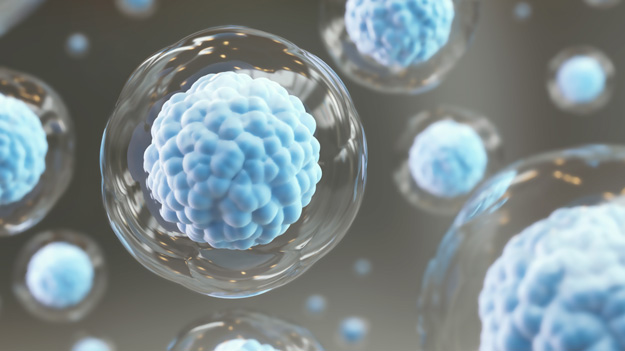Have you ever wondered if you could be your own doctor? What if you could tap into the remarkable power of stem cell regenerative medicine to heal yourself?
Unravel the mysteries of this groundbreaking field to discover the secret behind stem cells’ potential to transform healthcare and how they are reshaping the future of medicine.
The possibilities of self-healing through regenerative medicine are endless, perhaps making a future where self-healing becomes an attainable reality in your own hands.
Be Your Own Doctor! Embrace the Power of Stem Cell Regenerative Medicine
What is Regenerative Medicine?
Regenerative medicine is a new field of healthcare that revolutionizes the treatment of various medical conditions by harnessing the body’s self-healing abilities.
Nearly every human ailment, whether from injury, infection, chronic illness, or degenerative disease, involves tissue damage. This damage can lead to health problems, from impaired mobility and chronic pain to organ dysfunction and even life-threatening conditions.
Regenerative medicine offers an innovative solution to these medical issues, some of which have traditionally been difficult or impossible to treat through conventional means.
How Does Regenerative Medicine Work?
Regenerative medicine centers on restoring, repairing, or replacing damaged tissues and organs within the human body. This premise of regenerative medicine sets it apart from conventional medical approaches that primarily alleviate symptoms.
Regenerative medicine achieves this goal through fundamental techniques like stem cell therapy, where versatile stem cells such as embryonic stem cells (ESCs), adult stem cells (ASCs), or induced pluripotent stem cells (iPSCs) are used.
Other procedures, such as genetic engineering, modify tissues or cells to increase their therapeutic potential. Tissue engineering, in which functioning tissues or even complete organs are created externally, allows for therapeutic purposes like transplantation.
Regenerative Medicine Examples
Stem Cell Therapy

Stem cell therapy is at the forefront of regenerative medicine. Stem cells can transform into different cell types, making them invaluable in repairing damaged tissues and organs. For instance, in spinal cord injuries, stem cell treatments can regenerate damaged nerve cells, potentially restoring lost motor and sensory functions.
Stem cell-based therapies are also being explored for heart disease, with the hope of repairing damaged cardiac tissue and improving heart function.
In neurodegenerative disorders like Alzheimer’s and Parkinson’s, stem cells offer potential avenues for replenishing lost brain cells and slowing disease progression.
Genetic Engineering
Regenerative medicine employs genetic engineering to modify cells or tissues to enhance their therapeutic potential. This technique can involve introducing specific genes or making genetic modifications to improve the cells’ ability to regenerate.
In diseases like sickle cell anemia, genetic engineering can be used to correct the genetic mutations responsible for the condition, offering a potential cure.
Similarly, genetically modified immune cells, or CAR-T cells, are designed to target and destroy cancer cells more effectively in cancer treatments.
Tissue Engineering
Tissue engineering enables the creation of functional tissues and complete organs outside the body by integrating biological materials, cells, and growth factors.
Notably, tissue-engineered skin grafts have revolutionized the treatment of burn victims, accelerating wound healing significantly. This approach offers tremendous potential for addressing various medical challenges and enhancing patients’ quality of life.
In damaged cartilage or bone, tissue engineering and regenerative medicine offer the possibility of creating replacement tissues for transplantation, potentially alleviating conditions like osteoarthritis and bone fractures.
Stem Cells in Regenerative Medicine
Stem cell therapy is the most promising technique in regenerative medicine due to its remarkable potential to restore, repair, or replace damaged tissues and organs.
With 3 main types, stem cells offer unique advantages that set them apart:
- Embryonic stem cells (ESCs) possess the best versatility, derived from early-stage embryos, capable of differentiating into any tissue or organ in the body.
- Adult stem cells (ASCs), found in various tissues after birth, lie dormant until activated by the body and can generate specific specialized cells.
- Induced pluripotent stem cells (iPSCs) are artificially created from adult somatic cells, preserving the potential to differentiate into diverse cell types akin to ESCs.
Stem cell therapy is different because it harnesses these versatile properties to treat many medical conditions. Its promise is immense, from regenerating damaged organs to treating degenerative diseases through cellular replacement therapy.
For instance, stem cell therapy in cancer treatment can replace cancerous tissue with healthy cells cultivated from patient-derived stem cell lines. This approach reduces the risk of immune rejection and the need for invasive transplants.
Applications of Regenerative Medicine

Wound Healing
Regenerative medicine promotes faster and more effective tissue repair. Techniques such as tissue engineering for wound healing can stimulate skin regeneration and other damaged tissues, such as severe burns, chronic ulcers, or other complex wounds, promoting quicker healing and minimizing scarring.
Musculoskeletal Regeneration
Stem cells can promote bone and cartilage regeneration in orthopedic procedures, such as joint repairs or bone fractures, reducing pain and improving mobility. This approach holds promise for osteoarthritis treatment using stem cells or athletes recovering from sports injuries, as it aims to reduce the need for invasive surgeries.
Cardiac Regeneration
Stem cell therapy can be utilized to repair damaged cardiac tissue following heart attacks or in cases of heart failure. By injecting stem cells into the heart, they can integrate into the damaged tissue and promote regeneration, potentially restoring heart function. This approach reduces the risk of heart-related complications.
Neural Regeneration
Stem cell therapies can replace damaged neural tissue and promote functional recovery. For instance, neural stem cells can differentiate into neurons, potentially reconnecting damaged neural pathways and improving mobility or cognitive function. This approach represents a significant advancement in treating conditions that were once considered irreparable.
Vision Restoration
Stem cell-based approaches are being investigated to repair damaged retinal tissue in macular degeneration and retinitis pigmentosa. By transplanting retinal cells derived from stem cells, it is possible to replace damaged photoreceptors and restore vision to varying degrees. This finding holds great promise for those with vision-related disorders.
Organ Transplantation
With tissue engineering techniques, growing organoids (a scaled-down recreation of an organ from stem cells) in the lab may be possible. These bioengineered organs can support and repair damaged native organs, potentially alleviating the shortage of donor organs and reducing the risk of rejection in transplant recipients.
Pros and Cons of Regenerative Medicine

Pros
- Treatment of Incurable Diseases: Regenerative medicine offers new hope for individuals suffering from once-incurable diseases, such as spinal cord injuries, neurodegenerative disorders, and certain cancers.
- Personalized Medicine: Tailoring treatments to patients’ unique genetic and cellular profiles allows for more effective targeted therapies. This personalized approach enhances treatment outcomes while minimizing adverse effects.
- Reduced Dependence on Donor Organs: By harnessing tissue engineering and stem cell technologies, regenerative medicine reduces the reliance on scarce donor organs, addressing the organ shortage crisis and saving lives.
- Minimal Risk of Rejection: Using a patient’s cells or tissues in regenerative therapies significantly lowers the risk of immune rejection, increasing treatment safety and success rates.
- Drug Development: Regenerative techniques provide advanced in vitro models for drug testing, leading to the development of safer and more effective pharmaceuticals while accelerating the drug discovery process.
Cons
- Safety: Regenerative therapies might come with concerns about side effects, such as the possibility of tumor development or unfavorable immunological reactions. However, current studies try to reduce these dangers.
- High Costs: Developing and implementing regenerative therapies can be expensive, limiting access for some patients. Nonetheless, as technology advances in the future, costs are likely to decrease.
- Ethical Issues: Using embryonic stem cells has raised ethical concerns, but the field is actively exploring alternatives like induced pluripotent stem cells (iPSCs) to address these ethical dilemmas.
- Long-term Effects: The long-term effects of some regenerative therapies are still under investigation, particularly when genetic modification is involved. Continuous monitoring and research are essential to assess safety.
- Limited Clinical Data: Regenerative medicine is in its early stages of development, leading to limited long-term clinical data. Data availability is expected to improve as research progresses, enhancing our understanding of these treatments.
References
Bernhard J et al. (2016). Should We Use Cells, Biomaterials, or Tissue Engineering for Cartilage Regeneration? Stem Cell Research & Therapy.
Ho J et al. (2017). Current Advancements and Strategies in Tissue Engineering for Wound Healing: A Comprehensive Review. Advances in Wound Care.
Arrell K et al. (2020). Cardiopoietic Stem Cell Therapy Restores Infarction-altered Cardiac Proteome. NPJ Regenerative Medicine.
Chu D et al. (2020). Recent Progress of Stem Cell Therapy in Cancer Treatment: Molecular Mechanisms and Potential Applications. Cells.
Sivandzade F et al. (2021). Regenerative Stem Cell Therapy for Neurodegenerative Diseases: An Overview. International Journal of Molecular Sciences.
Zarghamian P et al. (2022). Clinical Genome Editing to Treat Sickle Cell Disease—A Brief Update. Frontiers in Medicine.
Jogalekar M et al. (2022). CAR T-cell-based Gene Therapy for Cancers: New Perspectives, Challenges, and Clinical Developments. Frontiers in Immunology.
Chogan F et al. (2022). Skin Tissue Engineering Advances in Burns: A Brief Introduction to the Past, the Present, and the Future Potential. Journal of Burn Care Research.
Rao P (2022). Stem Cell Therapies for Intraocular Disease. Missouri Medicine.
McKinley K et al. (2023). Emerging Frontiers in Regenerative Medicine. American Association for the Advancement of Science (AAAS).
Xia Y et al. (2023). Mesenchymal Stem Cells in the Treatment of Spinal Cord Injury: Mechanisms, Current Advances and Future Challenges. Frontiers in Immunology.
Thoene M et al. (2023). The Current State of Osteoarthritis Treatment Options Using Stem Cells for Regenerative Therapy: A Review. International Journal of Molecular Sciences.

